Get started
Sign up and create an API key
An API key authenticates your machine to W&B. You can generate an API key from your user profile.For a more streamlined approach, you can generate an API key by going directly to the W&B authorization page. Copy the displayed API key and save it in a secure location such as a password manager.
- Click your user profile icon in the upper right corner.
- Select User Settings, then scroll to the API Keys section.
- Click Reveal. Copy the displayed API key. To hide the API key, reload the page.
Install the wandb library and log in
To install the wandb library locally and log in:
- Command Line
- Python
- Python notebook
-
Set the
WANDB_API_KEYenvironment variable to your API key. -
Install the
wandblibrary and log in.
Log metrics
Make plots
Step 1: Import wandb and initialize a new run
Step 2: Visualize plots
Individual plots
After training a model and making predictions you can then generate plots in wandb to analyze your predictions. See the Supported Plots section below for a full list of supported charts.All plots
W&B has functions such asplot_classifier that will plot several relevant plots:
Existing Matplotlib plots
Plots created on Matplotlib can also be logged on W&B Dashboard. To do that, it is first required to installplotly.
Supported plots
Learning curve
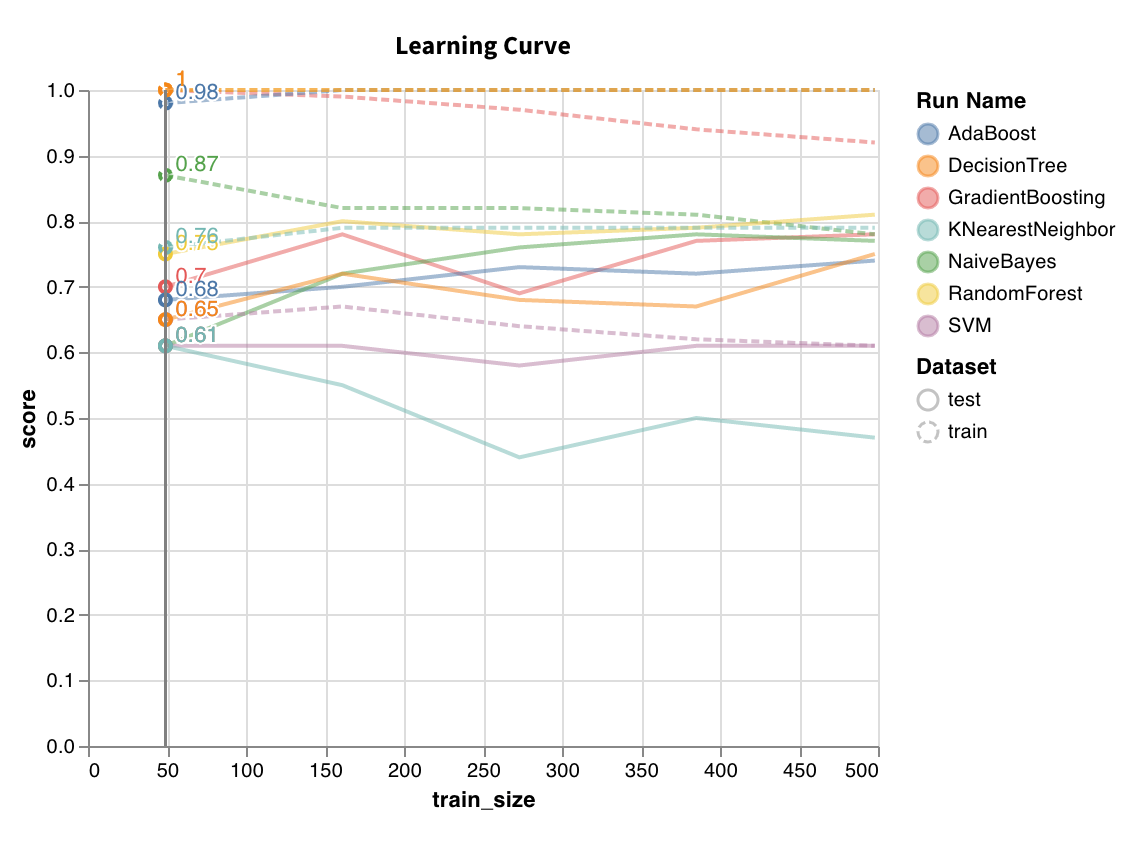
wandb.sklearn.plot_learning_curve(model, X, y)
- model (clf or reg): Takes in a fitted regressor or classifier.
- X (arr): Dataset features.
- y (arr): Dataset labels.
ROC
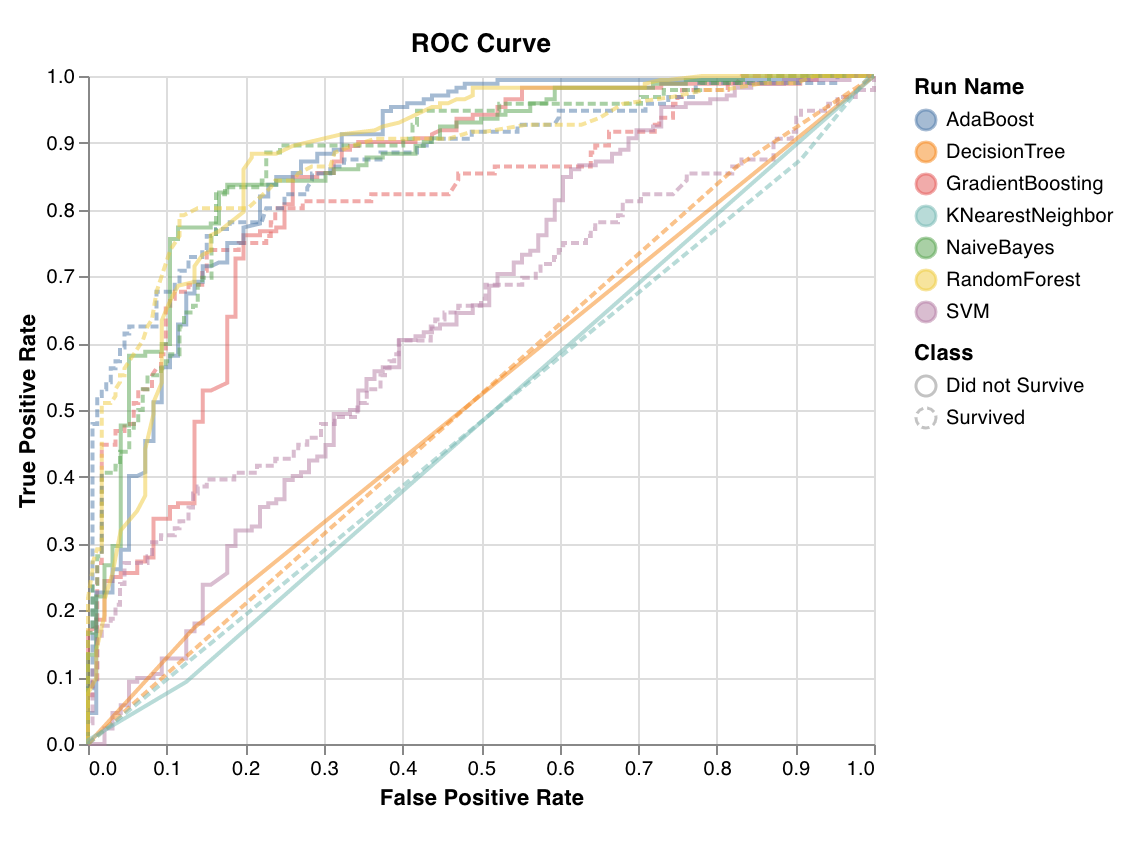
wandb.sklearn.plot_roc(y_true, y_probas, labels)
- y_true (arr): Test set labels.
- y_probas (arr): Test set predicted probabilities.
- labels (list): Named labels for target variable (y).
Class proportions
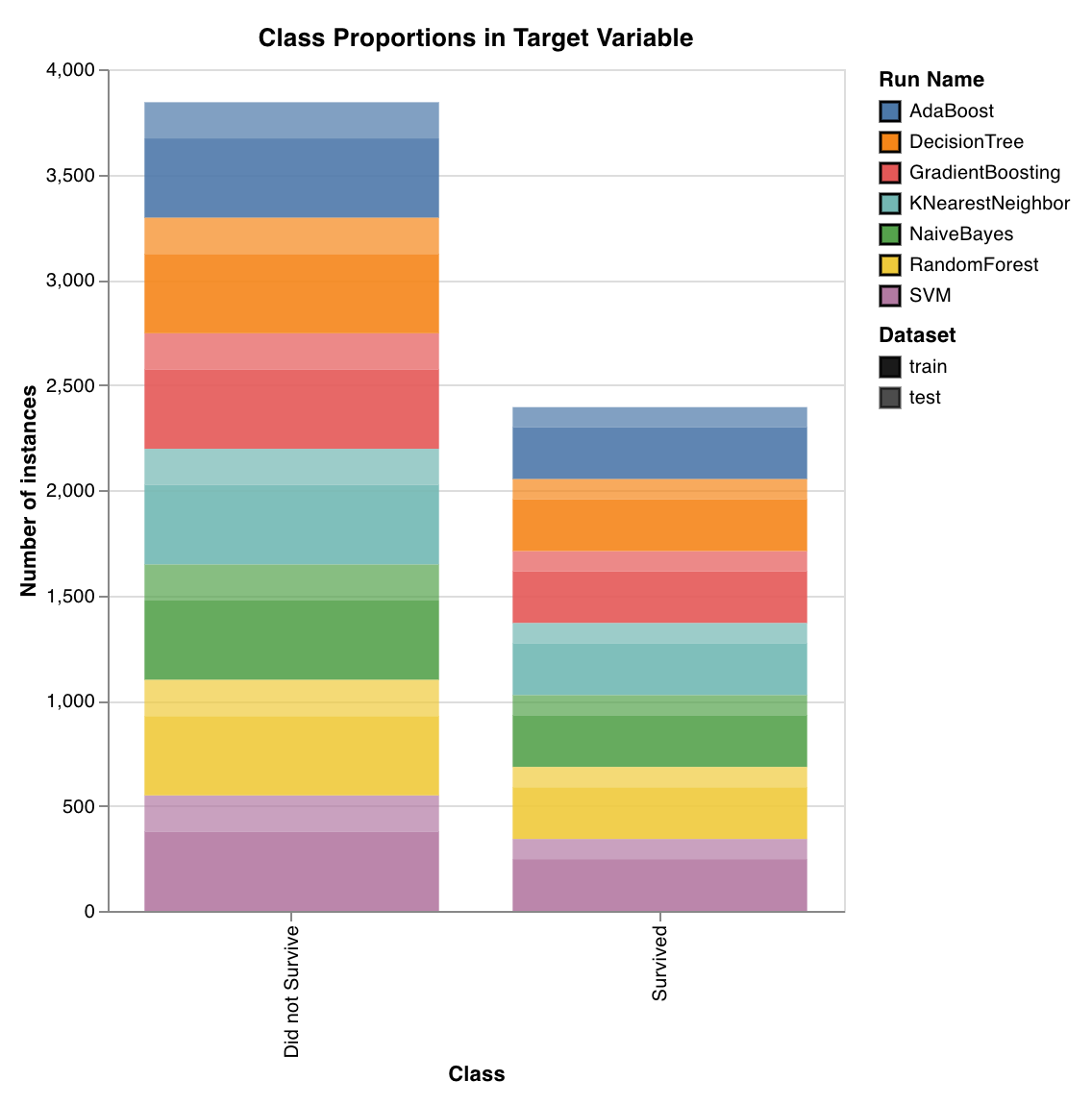
wandb.sklearn.plot_class_proportions(y_train, y_test, ['dog', 'cat', 'owl'])
- y_train (arr): Training set labels.
- y_test (arr): Test set labels.
- labels (list): Named labels for target variable (y).
Precision recall curve
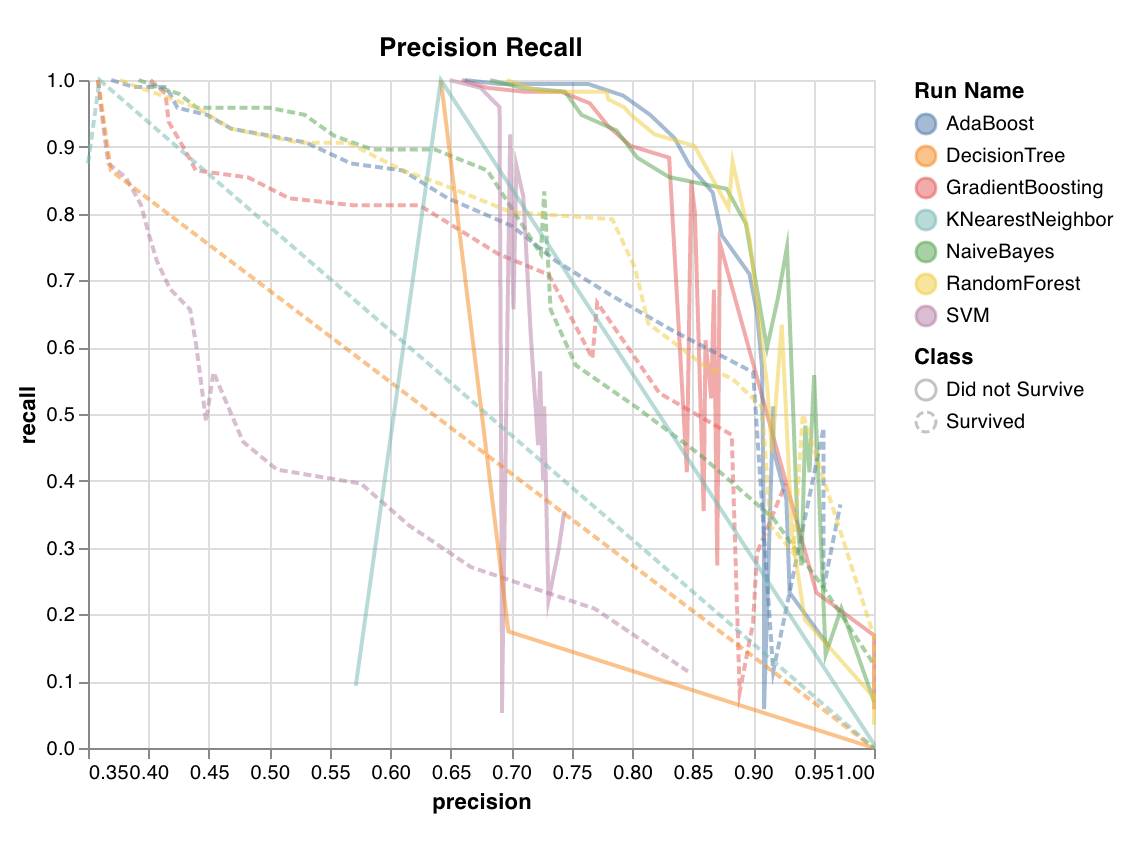
wandb.sklearn.plot_precision_recall(y_true, y_probas, labels)
- y_true (arr): Test set labels.
- y_probas (arr): Test set predicted probabilities.
- labels (list): Named labels for target variable (y).
Feature importances
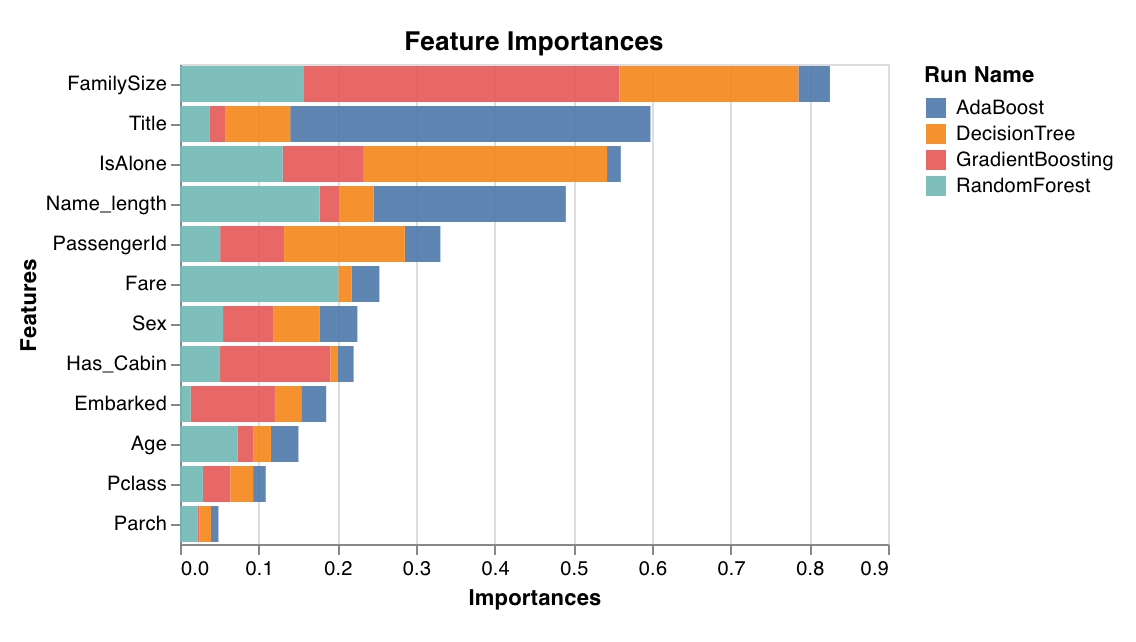
feature_importances_ attribute, like trees.
wandb.sklearn.plot_feature_importances(model, ['width', 'height, 'length'])
- model (clf): Takes in a fitted classifier.
- feature_names (list): Names for features. Makes plots easier to read by replacing feature indexes with corresponding names.
Calibration curve
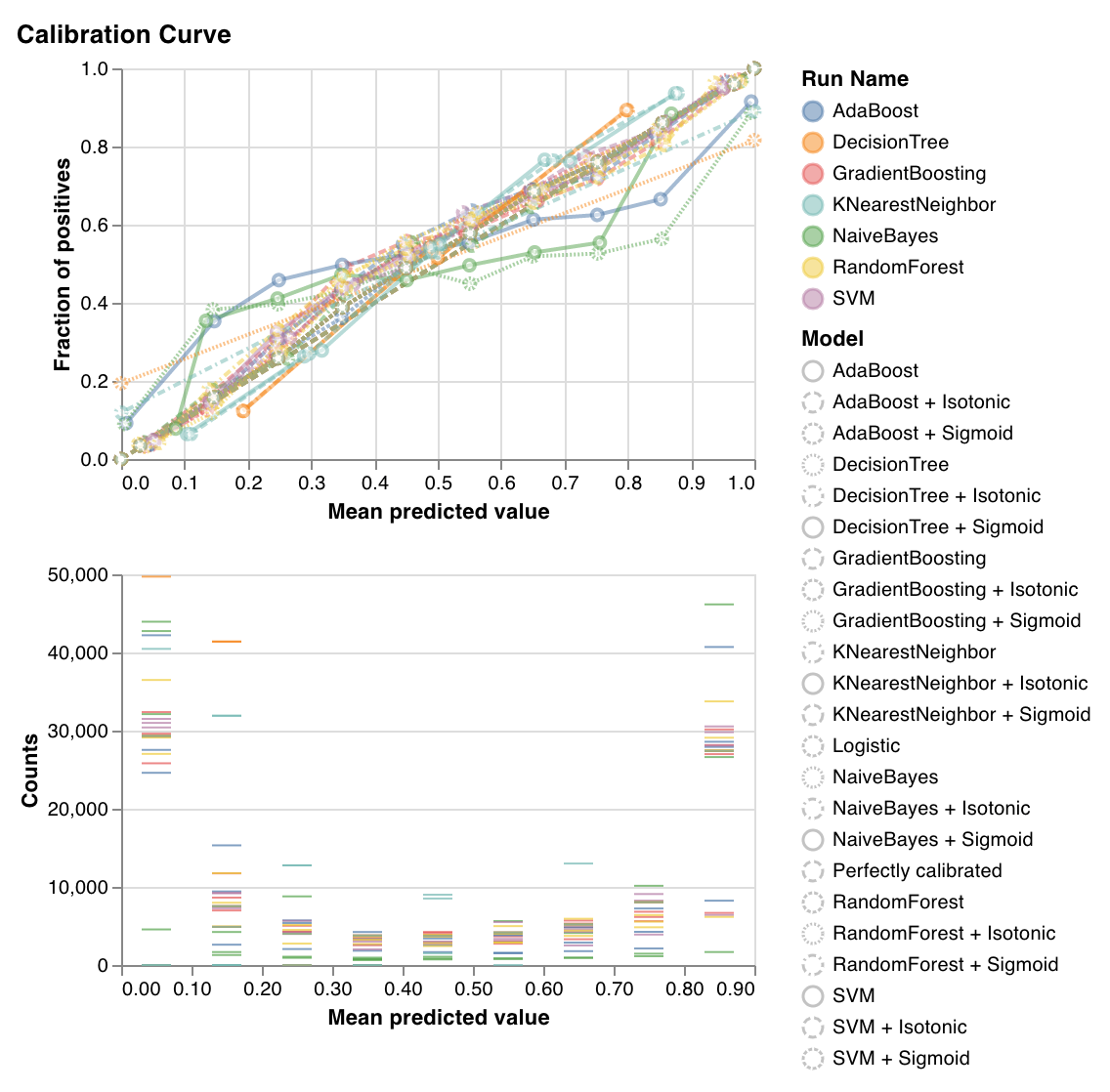
wandb.sklearn.plot_calibration_curve(clf, X, y, 'RandomForestClassifier')
- model (clf): Takes in a fitted classifier.
- X (arr): Training set features.
- y (arr): Training set labels.
- model_name (str): Model name. Defaults to ‘Classifier’
Confusion matrix
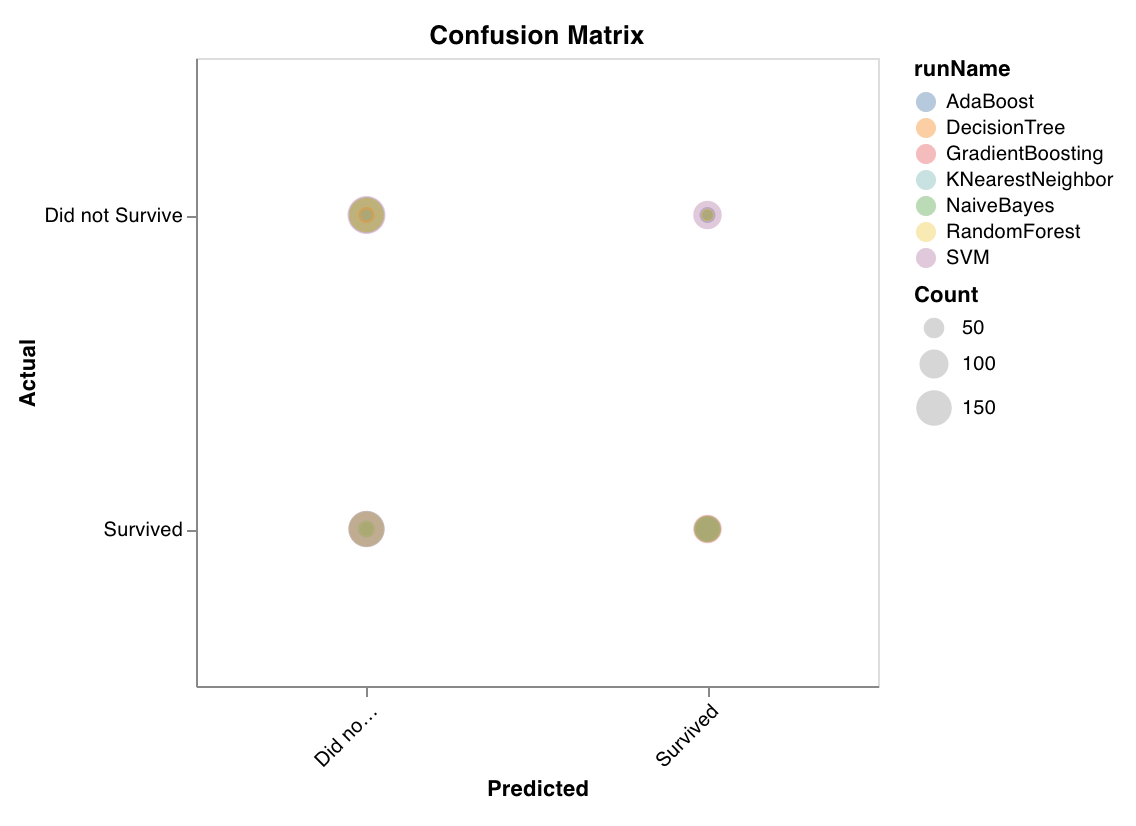
wandb.sklearn.plot_confusion_matrix(y_true, y_pred, labels)
- y_true (arr): Test set labels.
- y_pred (arr): Test set predicted labels.
- labels (list): Named labels for target variable (y).
Summary metrics

- Calculates summary metrics for classification, such as
mse,mae, andr2score. - Calculates summary metrics for regression, such as
f1, accuracy, precision, and recall.
wandb.sklearn.plot_summary_metrics(model, X_train, y_train, X_test, y_test)
- model (clf or reg): Takes in a fitted regressor or classifier.
- X (arr): Training set features.
- y (arr): Training set labels.
- X_test (arr): Test set features.
- y_test (arr): Test set labels.
Elbow plot
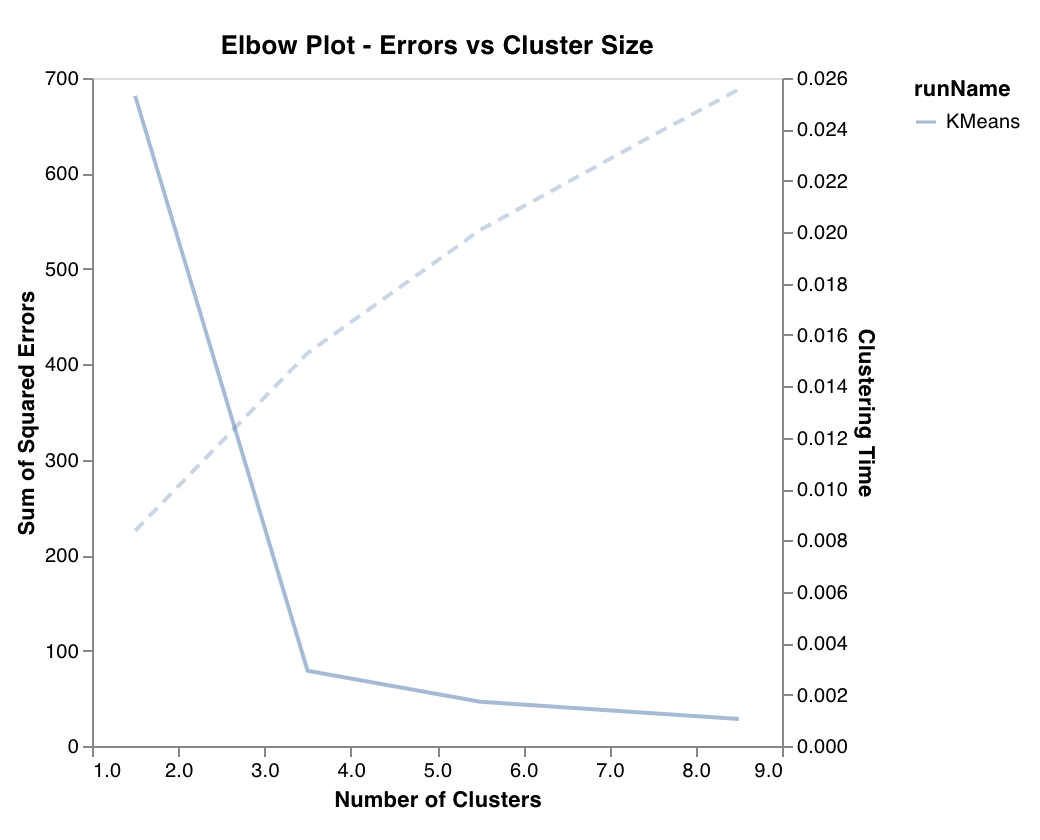
wandb.sklearn.plot_elbow_curve(model, X_train)
- model (clusterer): Takes in a fitted clusterer.
- X (arr): Training set features.
Silhouette plot
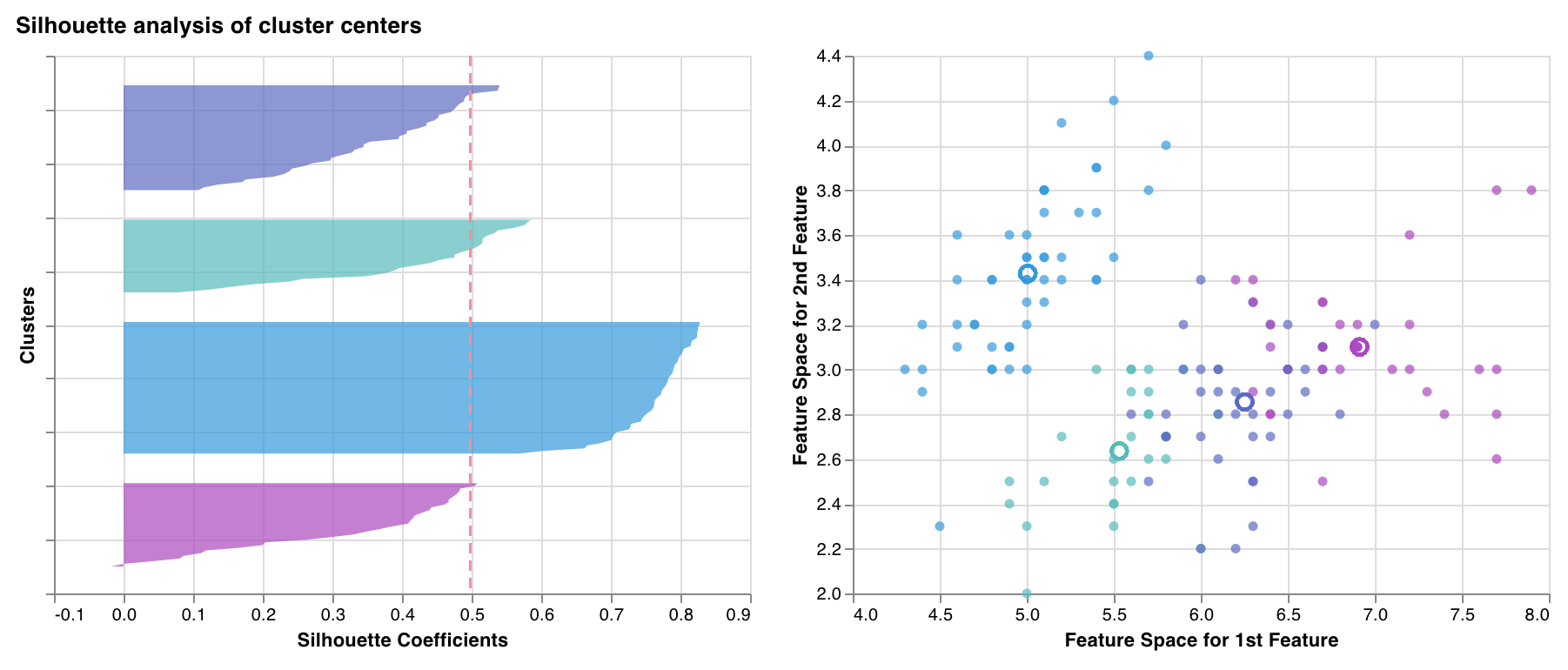
wandb.sklearn.plot_silhouette(model, X_train, ['spam', 'not spam'])
- model (clusterer): Takes in a fitted clusterer.
- X (arr): Training set features.
- cluster_labels (list): Names for cluster labels. Makes plots easier to read by replacing cluster indexes with corresponding names.
Outlier candidates plot
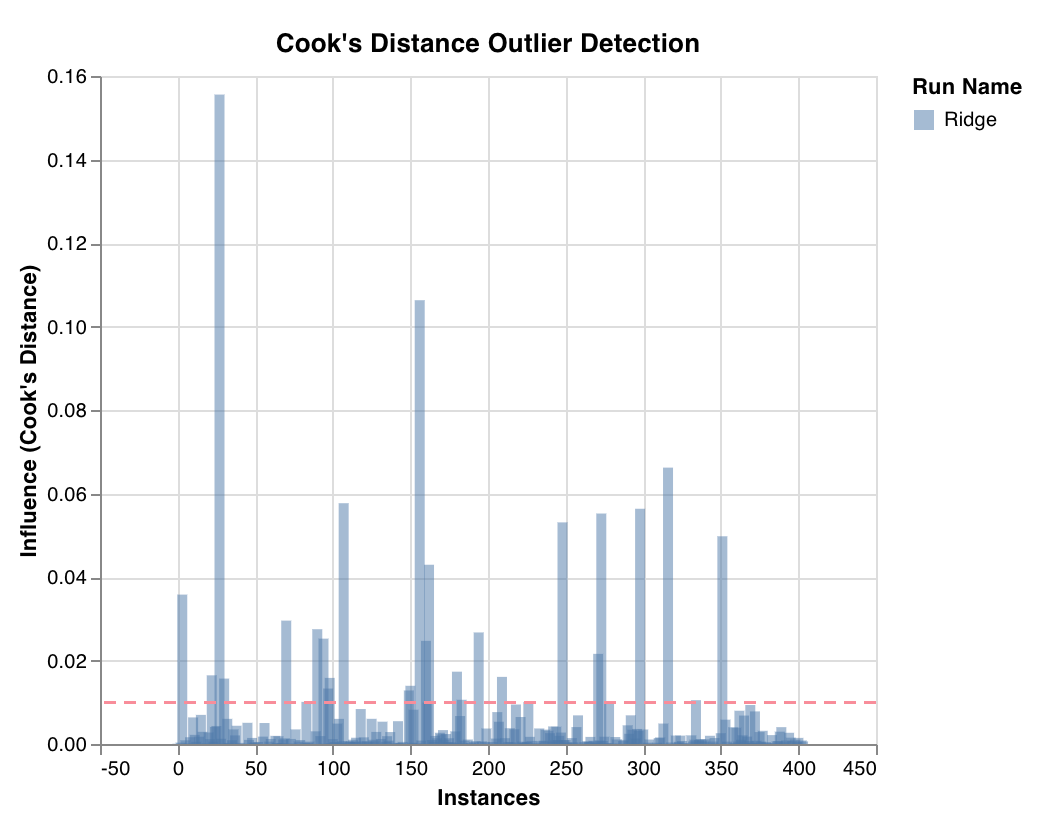
wandb.sklearn.plot_outlier_candidates(model, X, y)
- model (regressor): Takes in a fitted classifier.
- X (arr): Training set features.
- y (arr): Training set labels.
Residuals plot

wandb.sklearn.plot_residuals(model, X, y)
- model (regressor): Takes in a fitted classifier.
- X (arr): Training set features.
- y (arr): Training set labels. If you have any questions, we’d love to answer them in our slack community.
Example
- Run in colab: A simple notebook to get you started.